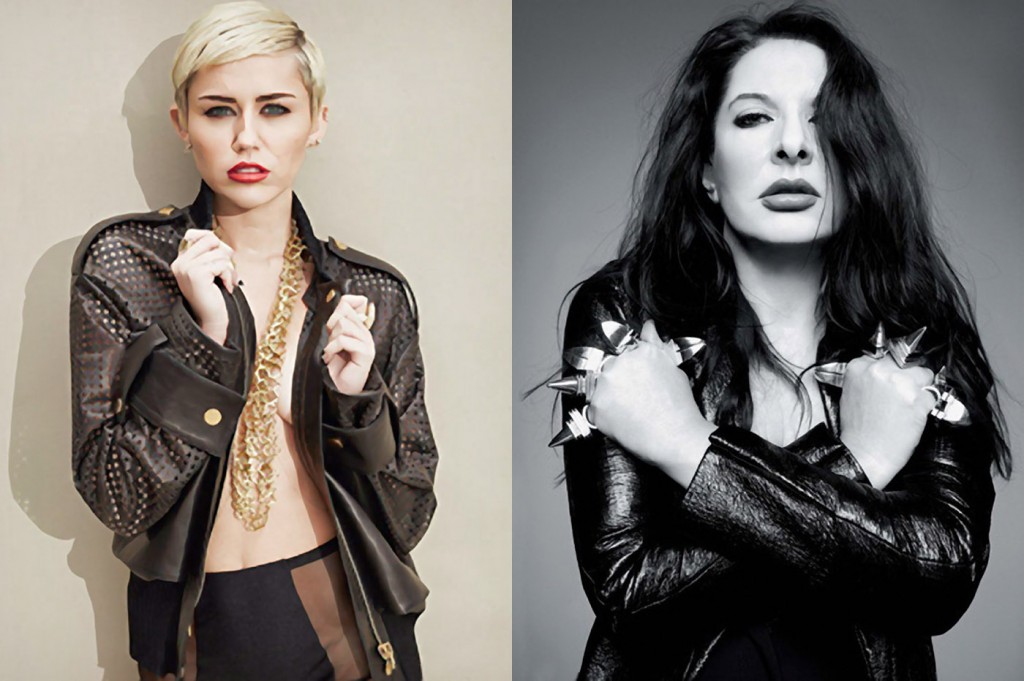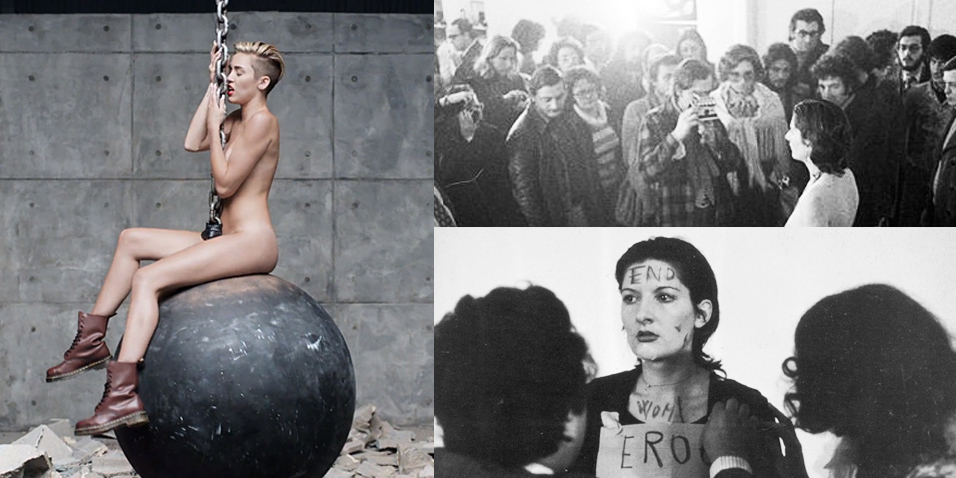
2013 was a breakout year for Pop's latest wild child Miley Cyrus, having shed her G-rated image for a new, more mature direction. Hardly a week went by without a controversy -- butchering her hair, dropping Molly and marijuana references, twerking on live TV, NSFW fashion shoots -- each one making plain that Miley is not your tween role model anymore. We may dismiss her viewer provocation, exploitation of sexuality, and self-destructive tendencies as headline-grabbing antics, but perhaps there's more going on here. Similar tactics have been used by contemporary artist Marina Abramovic, the "grandmother of performance art." Marina also had a stellar 2013, founding a performance art institute, starring in an opera about her death, writing James Franco's biography, and most famously, inspiring Jay-Z's recent video for "Picasso Baby."
If your reaction is "Marina who?" then here's a brief introduction. Marina Abramovic made a name for herself in the anarchic heyday of Performance Art in the 1970s as an ultra-serious zealot. Performances such as her seminal Rhythm series were notorious for the dangerous circumstances she devised, and her endurance of self-imposed penances. In her legendary work Rhythm 0 (1974), Marina offered spectators the opportunity to pleasure or harm her naked body with a myriad of objects ranging from a feather to a loaded gun, which audience members proceeded to do. Fast forward to 2010: for The Artist is Present, a work staged at the MoMA in conjunction with a career survey and documented by HBO, Marina silently locked eyes, one at a time, with hundreds of thousands of spectators queued up over three months (736 hours total).
Marina is taking advantage of her fame while making a significant shift in her career with some high-profile celebrity collaborations. On the heels of her MoMA show, Marina has found her brand in demand by Lady Gaga, James Franco, and Jay-Z. For his "Picasso Baby" music video, Jay-Z reinterpreted Marina's The Artist Is Present at Pace Gallery, featuring himself as the Artist, rapping and strutting, and casting Marina as one of many reveling VIP participants. "Picasso Baby" is subtitled "A Performance Art Video," but is it performance art, a music video, a hybrid?
Caught off guard, viewers often don't know what to make of these new hybrids. (Critic Jerry Saltz, who was in attendance, went in skeptical and left "elated".) When artists long for celebrity fame and pop stars flaunt Art World cred, traditionally separate frameworks of interpretation break down and merge together. The Art World badge gives an aura of seriousness to celebrity bearers, but perhaps it's not necessary anymore, if the boundary between the two worlds is so porous. Perhaps we can stretch out this broad hybridized pop/art framework a bit further, to reevaluate work lacking that aura of seriousness.

"Wrecking Ball" is the centerpiece of Miley's campaign to reinvent herself. The video has been written off by some critics for its overt raunchiness, but let's ignore that bias and consider the work from a different perspective. When compared to Marina's Rhythm series (specifically Rhythm 0), some interesting parallels emerge.



